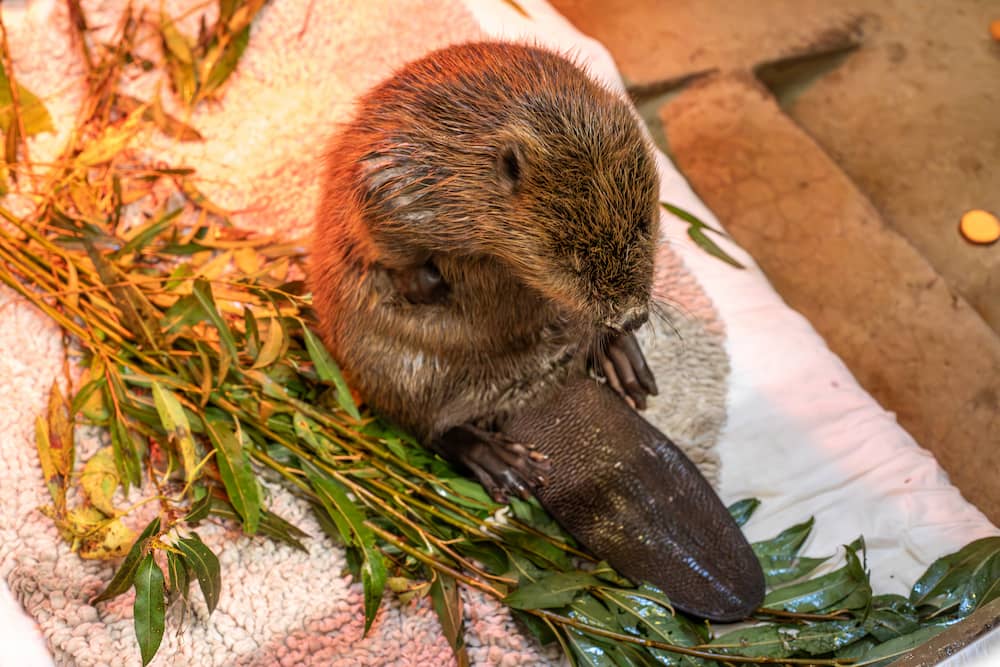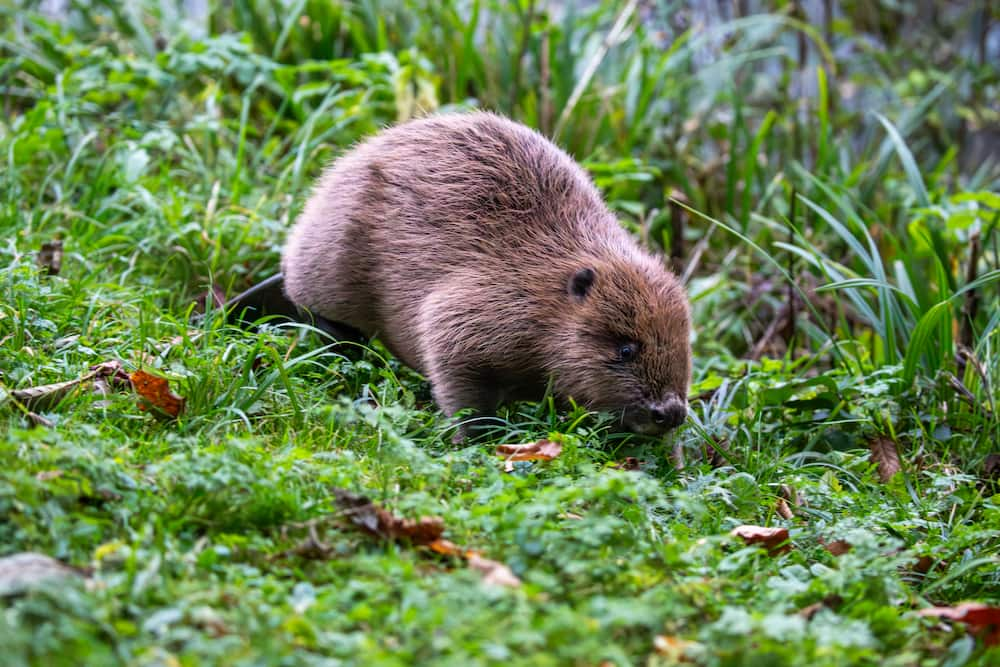A rare rescue
Matt, a rescuer from the charity Secret World Wildlife Rescue, was out on a mission to rescue an otter trapped in a storm drain. But he soon realised he was looking at a different kind of brown, furry mammal. He spotted two young beavers, stuck beneath the metal bars that covered the drain.
Matt fished them out of the mucky water and drove them to the RSPCA’s West Hatch Wildlife Centre in Somerset, where our staff could take care of them.
“One of the beavers was very weak, so we gave him some fluids to perk him up,” says David, a wildlife vet at West Hatch Wildlife Centre. “Both of the beavers – who we guessed were siblings based on their size and young age – had picked up eye infections from the dirty water.”
Hanging out by the pool
We moved the beavers to a clean paddling pool. This kept the beavers’ eyes clean and cleared up the eye infection naturally.
Staff turned an indoor seal enclosure into a home for the pair and they were soon splashing around in their pool and getting cosy under a heat lamp.
“We fed them on willow branches and root vegetables,” says David. “Beavers can digest soft wood and stems, but most of the wood they chew is for building dams and lodges, not food.”
Once their infections had cleared up, we moved the pair to a bigger pool where they could practise their swimming skills. Beavers are semi-aquatic rodents, which means they’re at home in the water as well as on land.

Release rules
Releasing beavers into the wild is illegal in most places, so finding a home for this pair wasn’t easy. Here’s the story of how they returned to the UK.
- Humans hunted so many beavers for their fur, meat and scent oil that they became extinct in the UK 400 years ago.
- In 2001, two conservation charities and a government group called Natural England imported two families of Eurasian beavers from Norway to the Kent to help manage an area of wetland with their natural building skills. And in 2009, three families of beavers were released in Scotland.
- The beavers did such a good job that more families were released into large, natural enclosures. They’ve been thriving ever since, so beavers are officially back in England!
- A few beavers have escaped and some have been illegally released into the wild – our pair were probably descended from these.
- Conservationists think beavers will help our ecosystems – building dams that will create pools of still water that attract all kinds of wildlife. But some people are worried that their dams could cause streets, houses and farms to flood.
- So Natural England is keeping track of how wild beavers are changing our landscape. Beavers like our pair can only be released into an officially approved spot.
- In the meantime, the government has made beavers a ‘protected species’ – so thankfully it’s now illegal to harm or disturb them.
Release day
Once we found an approved site, we fitted the beavers with digital identification chips and attached numbered tags to their ears. This helps Natural England tell who they are and where they’ve come from – in case they’re ever spotted or rescued again.
On the day of release, the team headed to the river.
“They seemed eager to explore,” says RSPCA photographer Emma, who was there when the pair was released. “They had a sniff around the bank and took the plunge!”
Now the beavers are surrounded by trees, reeds and grass, which they can use for building materials and shelter, and lots of clean water to swim in. That sounds much better than a dirty storm drain!


